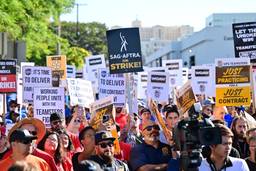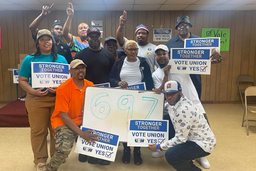As Dems End Deadlock on Crucial National Labor Board, What’s Next on Agenda?
Lindsay Beyerstein
By Lindsay Beyerstein
The two-year deadlock at the National Labor Relations Board is finally over, thanks to a pair of recess appointments by President Obama. With Democrats now in control of the board, and the Employee Free Choice Act stalled for the foreseeable future, labor is pinning its hopes on the board.
There are more than 200 cases pending before the NLRB. At stake are questions such as: How much access must employers give to union organizers on company property? Can employees use company email to communicate about union affairs if the employer allows other non-work emails?
The AFL-CIO is pushing the board to prevent delays in unionization votes. Anti-union employers often drag out the election process in order to buy themselves time to intimidate and propagandize workers. Since the employer has more power over the workplace than the union, delays work in the employer’s favor.
One of the new NLRB appointees, Craig Becker, is expected to take a special interest in union elections. Union election reform has been a centerpiece of his academic career. Becker has argued that management should have very limited powers to intervene in union elections. That’s one of the main reasons why Becker has become a the bete noir of big business groups like the Chamber of Commerce and the National Organization of Manufacturers.
Finally, there’s the tantalizing prospect that the newly Democratic NLRB could move beyond adjudicating individual cases and start making broader rules. It would be the board’s first foray back into rule-making in 20 years. One proposed rule put forward by a labor groups would allow unions to seek separate elections for a pro-union subset of an individual workplace. Allowing piecemeal unionization might provide a toehold for labor in workplaces that have proven difficult to organize.
Three of the five seats on the board sat empty from January 2008 until late last month. The remaining two members of the board soldiered on in the interim, ruling on over 600 cases where they were able to reach a consensus. However, it was unclear whether their verdicts were really binding because a board with less than two members did not constitute a quorum. Just before the recess appointments, the Supreme Court heard arguments about whether decisions of a two-member NLRB were valid.







